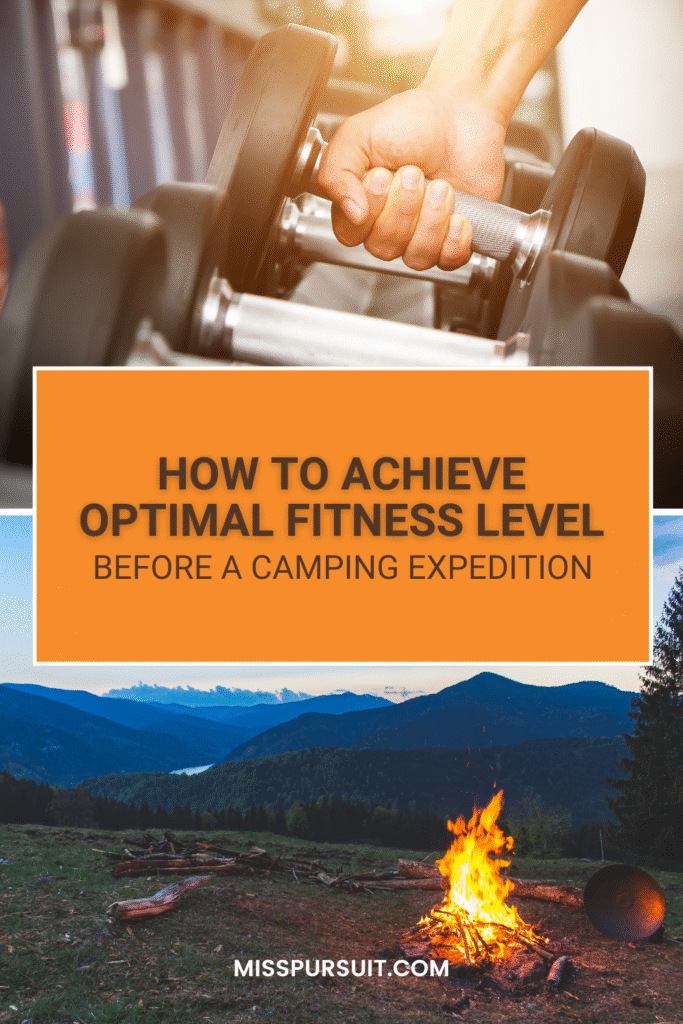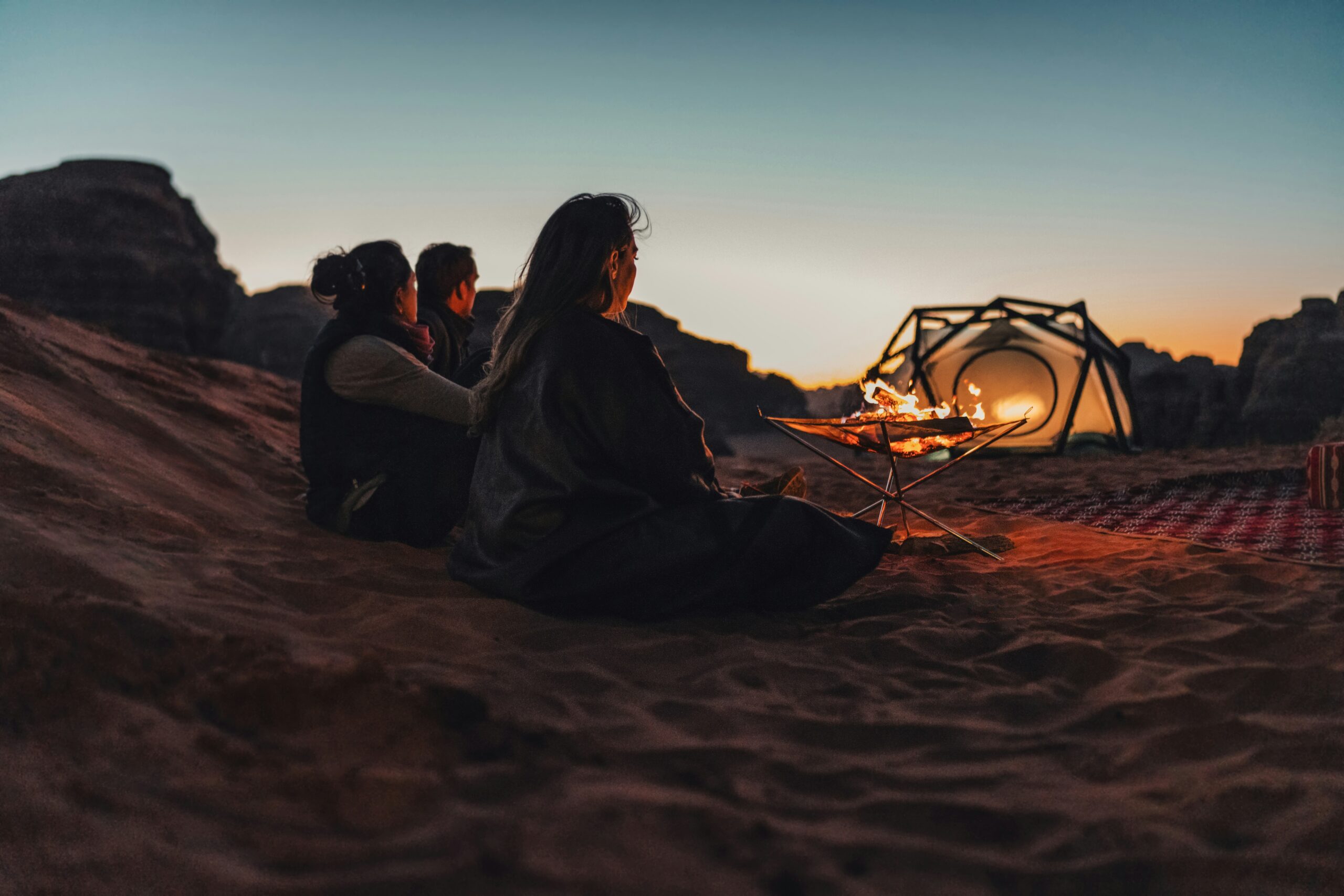Americans love the great outdoors, and these adventure trips gained immense popularity amid the pandemic. The trend hasn’t slowed down, with 16,058 campgrounds and RV parks operating in the US as of 2024. According to Ibis World, this number marks a growth of 1.2% from 2023.
While the idea of a camping trip is thrilling, it requires a lot of planning. Think beyond choosing a campsite and parking the essentials. Preparing your body and mind is equally important. It isn’t just about having fun in the wilderness; rather, it’s about making the trip enjoyable, safe, and memorable.
Achieving optimal fitness for an outdoor expedition means building strength, stamina, mobility, and mental focus. There aren’t any shortcuts, but a few actionable steps can help you achieve the fitness level to keep going.
Fuel Your Body
Nutrition is the foundation of any fitness plan, even more so when preparing for physically demanding activities like camping or trekking. The sooner you start with a diet plan, the better. Even a few weeks of preparation can give your body a head start in facing the rigors of the wild.
To support your exercise routine and recovery, you must focus on whole fruits and skip anything that’s processed. Look for healthy substitutes, such as brown rice for white rice, healthy fats for unhealthy ones, and honey for sugar. Stay hydrated, balance your portions, and time your meals. Follow these diet rules when you go on treks to ensure you have sustained energy.
Men’s Health recommends a list of camping snacks that will keep you full, happy, and energetic during your expedition. Nuts, carrots, homemade granola, prunes, and kale chips make great options. Pack plenty of them so that you don’t fall short of healthy snacks at the campsite.

Create a Realistic Fitness Routine
Physical preparation for a camping trip is also about adopting a workout routine well before you hit the campsite. A realistic routine requires structure and consistency so you don’t burn out. Remember that even a basic plan can have a big impact.
According to Shape, a balanced fitness plan includes diverse workouts for the upper and lower body. It also focuses on both high-intensity and low-intensity exercises. Rest is also a critical component of a result-oriented fitness schedule. Avoid doing the same exercise daily, as it will make you hit a plateau.
Aim for balanced training that improves strength, endurance, and mobility, tailored to the demands of your specific camping destination. Also, know how to avoid injuries and what to do if you sustain them in the middle of nowhere.
Know Your Limitations
Camping and trekking challenge your body in unique ways. Even the fittest of people struggle with uneven terrain, heavy packs, changing weather, and unpredictable conditions. Respect your own level of experience and fitness. For someone with lower back pain, going for a camping trip should not be a distant dream.
Knowing this is important because chronic back pain is a growing problem in the US. Statista reports show that 28% of American adults reported chronic low back pain or sciatica pain in 2022. Many explore advanced treatment options like spinal cord stimulator implantation for long-term relief. However, TruLaw highlights the risk related to the device.
Many patients have suffered from complications like infections, device malfunction, and worsening pain. Some have even filed spinal cord stimulator lawsuit claims to seek compensation from the manufacturer. To bring things back into perspective, your physical limitations should not keep you from enjoying the wonders of the outdoors.
Start small and build up gradually to avoid injury. If you’re new to trekking or have health issues like back pain, begin with flat trails and lighter weights. You can even find a trainer to guide you. Listen to your body and rest when sore or fatigued.
Invest in Mental Preparation
Physical fitness is only half the equation when it comes to achieving the optimal fitness levels for a camping adventure. Don’t overlook mental resilience, as it is vital for tackling tiring hikes, rough weather, and unexpected surprises. You may even lose your way, and being mentally resilient is the only way to deal with this crisis.
Mental preparation starts with visualizing your adventure. Picture each stage of the expedition, including challenges and solutions. Consider different scenarios and think about how you will tackle them. Expect gear malfunctions, fatigue, or changing plans, and adapt your mindset to treat these as part of the experience.
Mindfulness practices are as important as daily workouts to prepare your body. Yoga and meditation calm nerves and help you stay focused when discomfort arises.
Train with Your Backpack
Another valuable piece of advice is to train with the gear you’ll use. This simple practice helps your muscles, joints, and cardiovascular system adjust to the actual demands of camping. According to the New York Times, walking with a weighted backpack can be a complete exercise. It combines cardio and strength training without stepping into a gym.
Also, increase the pack weight slowly. Start with 25% of your intended load, then work up to full pack weight over 3–4 weeks. Walk on similar terrain you plan to explore during the trip. Hills, rocky paths, and woodland trails mimic actual conditions.
Besides practicing with different backpack loads and terrains, you must also practice multi-hour hikes. Gradually lengthen distances to improve endurance, and practice setting up camp as a cooldown.
FAQs
How to build stamina for trekking?
Aerobic workouts are great for building stamina for trekking. Focus on hiking, running, swimming, or biking. Try interval training to challenge your cardiovascular system. Train with a loaded backpack and mimic the real trek to help your body adapt. Prioritize sleep and stretch after each session to support stamina-building processes.
What fitness components are used in camping?
Camping draws on several fitness pillars. Cardiovascular endurance is the first one, and it is needed for hiking, long walks, and carrying gear. Next is muscular strength that can help you handle packs, set up camp, climb, or lift logs and rocks. Flexibility and mobility enable you to move efficiently and prevent injury while crossing uneven terrain. Core stability is needed for balance and posture during all activities.
How will hiking improve my fitness level?
Regular hiking delivers multiple physical benefits and is an easy and enjoyable way to be the fittest version of yourself. It boosts cardiovascular health, improves lower-body strength, and enhances core stability. Additionally, hiking supports mental well-being as nature exposure is proven to lower stress, increase happiness, and sharpen focus.
Achieving optimal fitness before a camping expedition isn’t about perfection. It is about being prepared to enjoy the outdoors to the fullest. Whether you’re chasing epic mountain vistas or simply relaxing around the campfire, this preparation ensures safety, fun, and a lifetime of adventure. Embark confidently, stay consistent with your training, and you’ll be amazed by what your body and mind can do outdoors.




